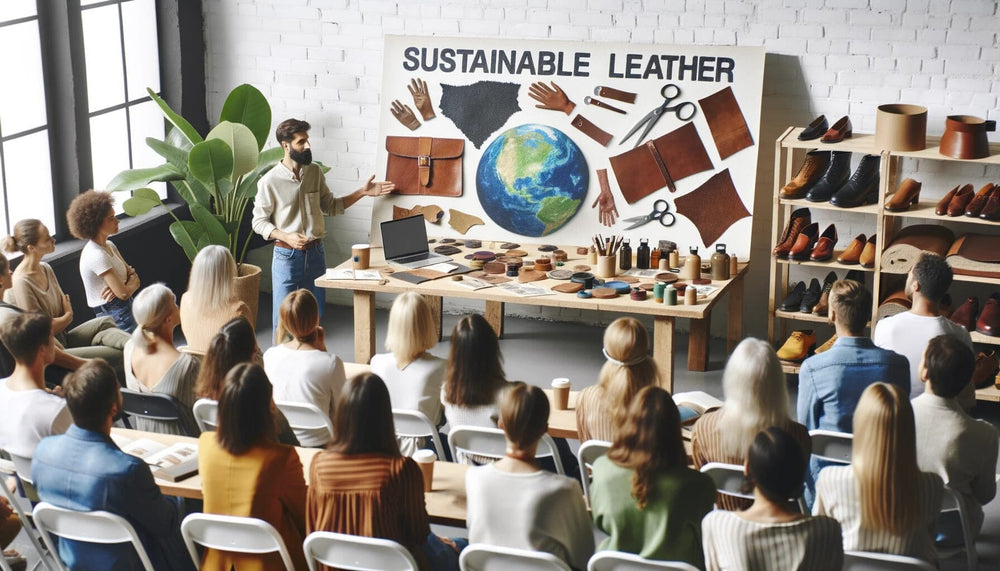
What is Eco Leather? The Future of Sustainable Fashion
Reading Time: about
In a world where every purchase we make leaves an imprint on our planet, the choices we make matter more than ever. Enter eco leather—a game-changer in the fashion industry that's turning heads not just for its style, but for its sustainability.
If you've ever wondered about the buzz surrounding eco leather or pondered over its significance in today's eco-conscious world, you're in for a treat.
This blog post delves deep into the world of eco leather, unraveling its mysteries and highlighting its role in shaping a greener future.
Whether you're a fashion enthusiast, an environmental advocate, or someone curious about sustainable trends, this guide promises insights that will both enlighten and inspire.
So, buckle up and get ready to embark on a journey through the fascinating realm of eco leather!
Summary
- 1. Understanding the Basics of Eco Leather
- 2. Eco Leather vs. Vegan Leather: What's Different?
- 3. What are the Environmental Impact of Traditional Leather?
- 4. How is Eco Leather Made?
- 5. What are the Different Types of Eco Leather?
- 6. Strengths and Durability of Eco Leather
- 7. Eco Leather in the Fashion Industry
- 8. How to Care for Eco Leather?
- 9. FAQs
I. Understanding the Basics of Eco Leather
As we delve deeper into the world of eco leather, it's essential to start with the basics. After all, to truly appreciate the value of something, one must first understand its essence. So, let's embark on this enlightening journey together, shall we?
1. Definition and Characteristics of Eco Leather
When I first heard the term "eco leather," I was intrigued. The name itself suggests a fusion of ecology and luxury. But what exactly is it? At its core, eco leather is a sustainable alternative to traditional leather. It's crafted with the environment in mind, minimizing the negative impacts associated with conventional leather production.
But it's not just about being eco-friendly. Eco leather boasts several distinctive characteristics:
-
Sustainability: As the name suggests, eco leather prioritizes environmental health. Whether derived from plant-based sources or produced using less water and chemicals, its production process is designed to be kinder to our planet.
-
Durability: Contrary to some misconceptions, eco leather is not a compromise on quality. It's designed to be long-lasting, often rivaling the durability of its traditional counterpart.
-
Versatility: From jackets to handbags, eco leather's adaptability is impressive. Its texture and appearance can be tailored to suit various applications, making it a favorite among designers.
-
Ethical Production: Beyond environmental considerations, eco leather often aligns with ethical production practices, ensuring fair wages, safe working conditions, and cruelty-free processes.
2. Contrasting Eco Leather with Traditional Leather
Now, I've been a fan of traditional leather for as long as I can remember. Its timeless appeal, the rich aroma, the way it ages gracefully – there's a lot to love. However, when I juxtapose it with eco leather, some stark differences emerge.
-
Environmental Impact: Traditional leather processing, especially the tanning process, can be quite taxing on the environment. It often involves chemicals that, if not managed correctly, can pollute water sources. Eco leather, on the other hand, seeks to mitigate these impacts through innovative production methods.
-
Source Material: While traditional leather is primarily derived from animal hides, eco leather can come from various sources, including plants like mushrooms and pineapples, or even recycled materials.
-
Production Ethics: The leather industry has, at times, faced criticism for unethical practices, be it in terms of animal treatment or labor conditions. Eco leather brands often prioritize ethical considerations, ensuring that their products are not only eco-friendly but also ethically produced.
-
Cost Implications: Due to the sustainable methods employed in its production, eco leather can sometimes be pricier than traditional leather. However, many argue that the long-term benefits – both to the environment and one's conscience – justify the price tag.
In conclusion, while both traditional and eco leather have their merits, the latter is steadily carving a niche for itself, especially among the environmentally-conscious and ethically-aware consumers of today. As we continue to explore this topic, I hope to shed more light on the nuances, benefits, and potential of eco leather in the modern world.
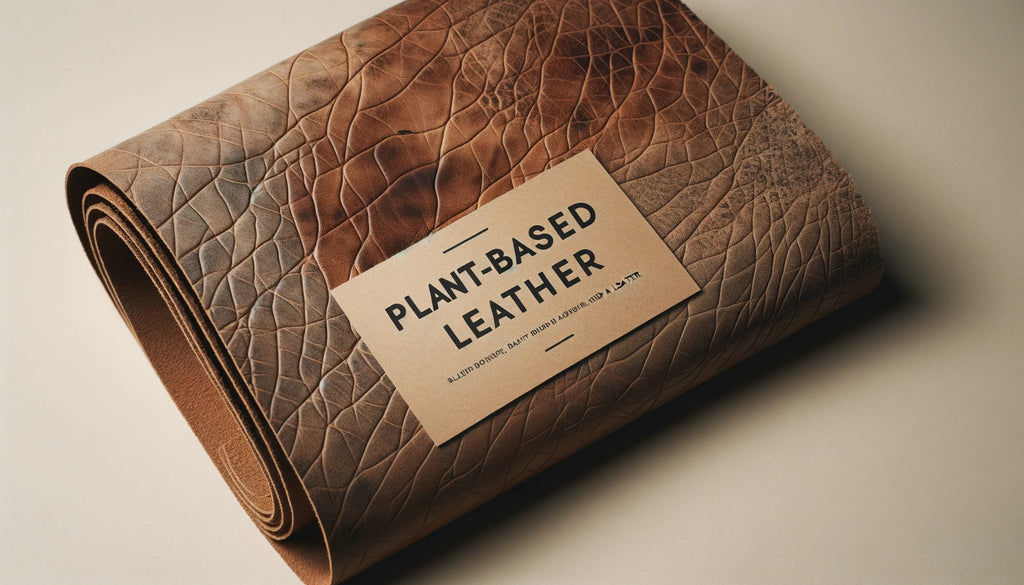
II. Eco Leather vs. Vegan Leather: What's Different?
Ah, the age-old debate (or at least, a debate that feels age-old in the fast-paced world of sustainable fashion): Eco leather versus vegan leather. I've often found myself in the midst of heated discussions about these two materials. And trust me, the waters can get murky. So, let's dive in and clear up some of the fog surrounding these two contenders.
1. Common Misconceptions Between the Two
First off, let's address the elephant in the room. Many folks use the terms "eco leather" and "vegan leather" interchangeably. I get it; they both sound green and planet-friendly. But here's the kicker: they're not the same thing. One of the most common misconceptions is that all vegan leathers are eco-friendly. While it's true that vegan leather doesn't use animal products (hence the "vegan"), it doesn't automatically make it environmentally benign. Some vegan leathers are made from PVC, a material that's not exactly a poster child for eco-friendliness.
Another misconception? That eco leather is just a fancy term for vegan leather. Not quite. While some eco leathers can be vegan, the term "eco" primarily refers to the environmentally-friendly processes involved in its production.
2. Key Differences in Composition
Now, let's break it down a bit further. Vegan leather, as I mentioned, is animal-free. It's often crafted from synthetic materials like PVC or more sustainable options like mushroom, cork, or even pineapple fibers (yes, you read that right, pineapples!). On the other hand, eco leather can be derived from animal hides but processed in a way that's less harmful to our dear planet. This might involve using vegetable tannins instead of harsh chemicals during the tanning process.
3. Production and Environmental Impact
When we talk about production, vegan leather made from synthetic compounds can be mass-produced, making it a go-to for many fast-fashion brands. However, the environmental toll of such materials, especially when they're not biodegradable, can be hefty.
Eco leather, with its emphasis on sustainable production, often has a more hands-on and artisanal approach. The tanning process, for instance, might use bark, leaves, or even fruit to minimize the environmental impact. And while it might not always be as scalable as synthetic production, the benefits to the environment are tangible.
In terms of environmental impact, it's essential to consider the entire lifecycle of the product. From sourcing the raw materials to production, usage, and eventual disposal, each stage has its footprint. While eco leather aims to minimize this footprint at every step, not all vegan leathers can boast the same.
While both eco leather and vegan leather offer alternatives to traditional leather, they cater to different needs and priorities. Whether you're an avid supporter of animal rights or an environmental enthusiast, understanding the nuances between these materials can help you make informed choices. After all, knowledge is power, and in the world of sustainable fashion, it's also incredibly chic.

III. What are the Environmental Impact of Traditional Leather?
When we think of leather, images of luxurious handbags, sturdy boots, and sleek jackets often come to mind. But behind the sheen and allure of these products lies a story that's not always as glamorous. Let's delve into the environmental implications of traditional leather production.
1. The Tanning Process and Its Effects on the Environment
The journey of transforming raw hides into the leather we adore is a complex one, and at the heart of this transformation is the tanning process. Now, I've been around the block a few times, and I can tell you that tanning isn't just about giving leather its color and finish. It's about preserving the hide, enhancing its durability, and making it resistant to decay.
Historically, vegetable tanning, which uses tannins found in plant matter, was the go-to method. It's a time-consuming process, often taking weeks to complete. While it's relatively eco-friendly, the industry, in its quest for efficiency, shifted towards chrome tanning. This method, which uses toxic chemicals like chromium, is faster but comes with a hefty environmental price tag.
Chrome tanning not only consumes vast amounts of water but also releases harmful chemicals into waterways. These chemicals can wreak havoc on aquatic life and even seep into drinking water sources. And while there have been efforts to manage and treat these effluents, the sad reality is that in many parts of the world, regulations are lax, and oversight is minimal.
2. Water Consumption and Waste Production in Leather Manufacturing
Beyond the tanning process, the leather industry is notoriously thirsty. From rearing livestock to processing hides, the water footprint is substantial. Did you know that producing a single pair of leather shoes can consume over 2,000 gallons of water? It's a staggering figure, especially when we consider the water scarcity challenges many regions face.
But water isn't the only concern. The waste generated during leather production is another pressing issue. Offcuts, trimmings, and shavings often end up in landfills, and while leather is biodegradable, the chemicals used in its production can leach into the soil, contaminating it.
Now, I'm not sharing this to dampen your love for leather products. Instead, I believe that as informed consumers, understanding the backstory helps us make better choices. Choices that align with our values and the kind of world we want to leave behind for future generations.

IV. How is Eco Leather Made?
When I first heard about eco leather, my initial thought was, "How is it different from the leather I've known all my life?" If you've been pondering the same question, you're in for a treat. Let's delve into the fascinating world of eco leather production.
1. The Sustainable Tanning Process
Traditional leather tanning, especially chrome tanning, has been under scrutiny for its environmental impact. The chemicals used can be harmful, and the waste generated can be detrimental to our ecosystems. But eco leather takes a different route.
Eco leather employs sustainable tanning methods that significantly reduce the environmental footprint. One such method that has caught my attention is vegetable tanning. Instead of harsh chemicals, vegetable tanning uses tannins found in plant matter like oak, chestnut, and hemlock. Not only does this method produce beautiful, durable leather, but it also ensures that the waste is biodegradable. Imagine that! Leather that respects Mother Nature.
2. Use of Alternative Materials and Methods
Now, here's where things get even more intriguing. Eco leather isn't just about sustainable tanning; it's also about innovative materials. Have you ever thought of leather made from mushrooms or pineapples? Sounds a bit sci-fi, doesn't it? But it's a reality.
Brands are experimenting with materials like Piñatex (derived from pineapple leaves) and Mycelium (mushroom roots) to produce leather alternatives. These materials, when processed, can mimic the texture and durability of traditional leather. And the best part? They're cruelty-free and have a much lower environmental impact. It's like having your cake and eating it too!
3. Benefits of Eco Leather Production for the Environment
By now, you might be thinking, "Okay, eco leather sounds great, but what's in it for our planet?" Well, quite a lot, actually.
- Reduced Chemical Pollution: With sustainable tanning and fewer chemicals, eco leather ensures that our water sources remain uncontaminated.
- Lower Carbon Footprint: The production of alternative materials like Piñatex requires less energy compared to traditional leather.
- Waste Reduction: Many eco leathers are biodegradable, ensuring they don't end up clogging our landfills for centuries.
- Conservation of Resources: Using parts of plants that are often discarded (like pineapple leaves) means we're making the most of our resources.
In essence, every time we choose eco leather, we're casting a vote for a greener planet. And in today's world, where every bit counts, it's a choice I'm proud to make.

V. What are the Different Types of Eco Leather?
Navigating the world of eco leather can be a bit like finding your way through a maze. There are so many terms and types to understand! But fear not, I'm here to guide you through it. Let's delve into the different types of eco leather and what sets each one apart.
1. Recycled & Byproduct Leather
When I first heard of recycled leather, I was intrigued. The idea of giving old leather a new lease on life? Brilliant!
Definition and Benefits:
Recycled leather, as the name suggests, is made by repurposing leather from old products, like that worn-out sofa or the jacket you no longer wear. Byproduct leather, on the other hand, comes from animals that were primarily raised for meat or other purposes. The leather is a "byproduct" of this primary industry. Both these types offer a sustainable alternative to traditional leather, ensuring that nothing goes to waste.
Waste Reduction:
Imagine all the leather products that end up in landfills every year. Now, picture a world where we recycle and reuse most of that leather. Impressive, right? By opting for recycled or byproduct leather, we're not just making a fashion statement; we're also contributing to significant waste reduction. It's a win-win!
2. Vegan Leather - Faux Leather - PU Leather
Ah, the world of vegan leather! It's vast, varied, and, let's be honest, a tad confusing.
Composition and How It's Made:
Vegan leather, also known as faux or PU leather, isn't derived from animals. Instead, it's made from a mix of synthetic materials, primarily polyurethane (PU). Through various processes, these materials are transformed to look and feel like genuine leather. The beauty of vegan leather lies in its versatility. It can be glossy, matte, stiff, soft – you name it!
Environmental Impact
Now, I know what you're thinking: "If it's synthetic, is it really eco-friendly?" It's a valid question. While vegan leather doesn't involve animal farming, its production can have environmental implications, especially if toxic chemicals are used. However, advancements in technology have led to more sustainable methods of producing vegan leather, reducing its environmental footprint.
3. Leather Tanned with Environmentally Friendly Chemicals
Traditional leather tanning processes can be quite harsh on our environment. But there's a greener way to do it.
Introduction to Vegetable Tanning and Other Sustainable Methods:
Vegetable tanning is an age-old method that uses tannins found in plant matter to tan leather. It's a slower process compared to chemical tanning, but the results? Absolutely worth the wait! The leather retains its natural look, and over time, it develops a beautiful patina. Besides vegetable tanning, there are other sustainable methods emerging, all aiming to reduce the environmental impact.
Benefits for the Environment and Product Quality:
Eco-friendly tanning methods not only reduce water and soil pollution but also produce leather that's biodegradable. And when it comes to quality, leather tanned using sustainable methods tends to be more durable and ages gracefully. So, not only are you making an eco-friendly choice, but you're also investing in a product that's built to last.
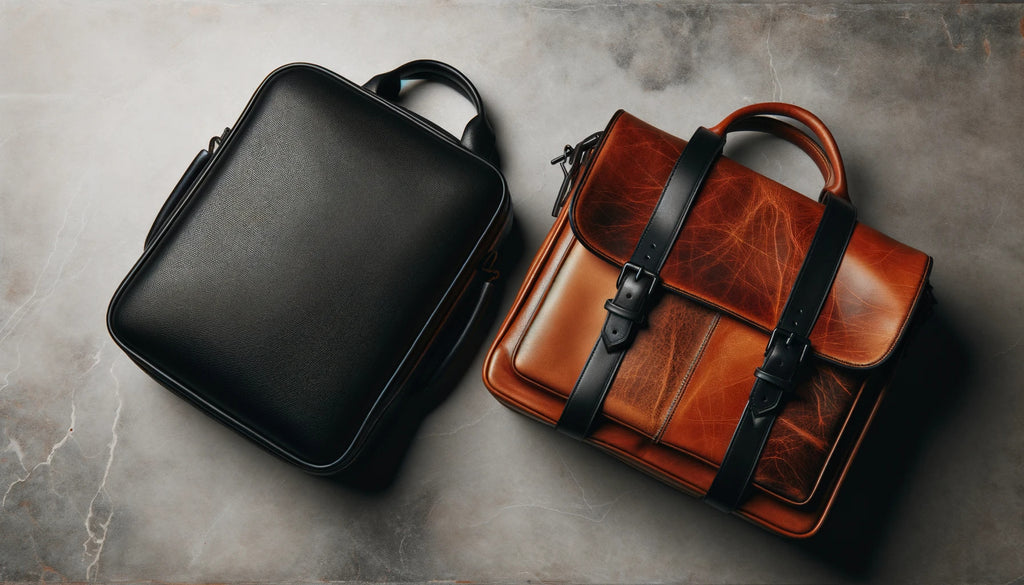
VI. Strengths and Durability of Eco Leather
When I first heard about eco leather, I'll admit, I was a tad skeptical. Can something eco-friendly really match up to the robustness and charm of traditional leather? It's a question many of us have pondered. After all, leather products are often cherished for their durability and timeless appeal. So, let's delve into this and see how eco leather stacks up against its traditional counterpart.
1. Comparison with Traditional Leather
Traditional leather has been around for centuries. It's been the material of choice for everything from rugged cowboy boots to luxurious handbags. Its strength, flexibility, and natural patina that develops over time have made it a beloved material worldwide. But with the good comes the not-so-good. Traditional leather production can be resource-intensive and environmentally taxing.
Eco leather, on the other hand, is the new kid on the block. But don't let its relative novelty fool you. In many ways, it's giving traditional leather a run for its money. First off, eco leather can be just as durable and versatile. Depending on its composition and the techniques used in its production, eco leather can mimic the feel and appearance of traditional leather quite closely. And here's the kicker: it does so while being kinder to our planet.
But what about wear and tear? How does eco leather fare when subjected to the rigors of daily life? I've found that high-quality eco leather products can withstand daily use just as well, if not better, than traditional leather items. They resist scratches, can handle a bit of moisture, and age gracefully.
2. Factors that Contribute to Eco Leather's Longevity
Now, let's talk about what makes eco leather so resilient. Several factors play into its durability:
-
Material Composition: The raw materials used in eco leather, whether plant-based or recycled, are processed to enhance their strength. This ensures that the final product is tough and long-lasting.
-
Innovative Tanning Processes: Unlike traditional leather, which often relies on chemical-heavy tanning methods, eco leather employs more sustainable tanning processes. These methods not only reduce environmental impact but also contribute to the material's durability.
-
Maintenance: Just like traditional leather, eco leather benefits from regular care. Simple practices like keeping it clean, storing it properly, and occasionally applying a protective treatment can extend its lifespan significantly.
-
Ethical Production: Many eco leather producers prioritize quality over quantity. This means that the products are often crafted with more attention to detail, ensuring they last longer.
While traditional leather has its merits, eco leather is proving to be a formidable alternative. It's strong, durable, and environmentally conscious. As someone who values both style and sustainability, I believe eco leather is a step in the right direction. And as we continue to innovate and refine the production processes, I'm optimistic that eco leather's strengths will only become more pronounced.
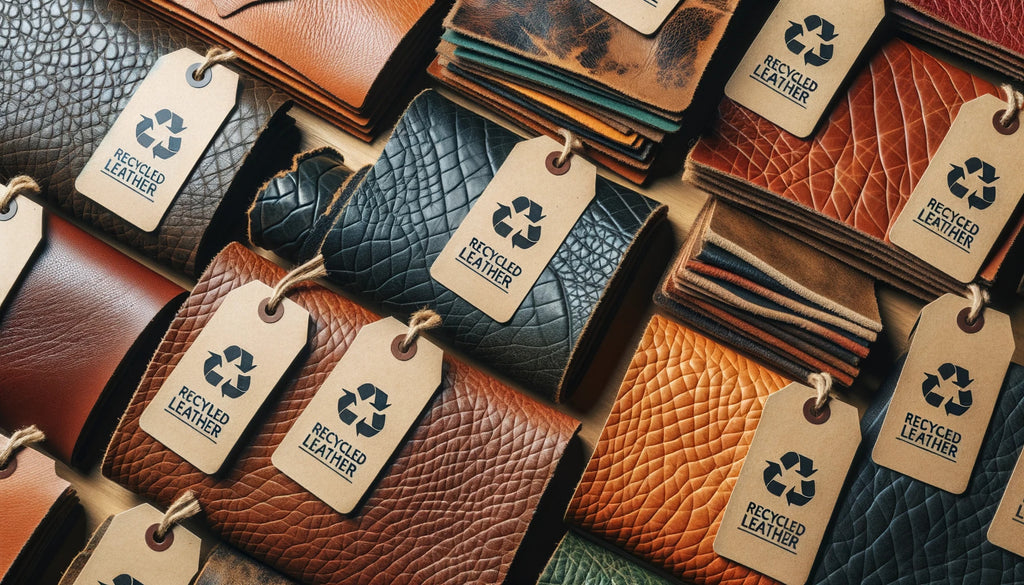
VII. Eco Leather in the Fashion Industry
As I delve deeper into the world of fashion, it's impossible to ignore the transformative wave that eco leather has brought with it. The leather industry, once synonymous with luxury at the expense of the environment, is now at the forefront of sustainable innovation. Let's explore how and why.
1. Brands and Designers Adopting Eco Leather
When I think of the fashion industry, I'm reminded of a dynamic, ever-evolving landscape. And within this landscape, brands and designers are the trendsetters, the visionaries who shape our sartorial choices. So, when these influencers start to embrace eco leather, you know it's not just a passing fad.
From iconic luxury brands to emerging indie designers, there's a palpable shift towards eco leather. Why? Because it offers the best of both worlds. The elegance and durability of traditional leather, minus the environmental guilt. Brands are not just adopting eco leather; they're celebrating it. They're showcasing it in their collections, highlighting its eco-friendly attributes, and educating consumers about its benefits.
But this shift isn't just driven by the brands' desire to be environmentally responsible. It's a response to something even more powerful: consumer demand.
2. The Rise of Sustainable Fashion and Consumer Demand
If there's one thing I've learned over the years, it's that consumers wield immense power. Their preferences, their demands, their buying choices – they shape industries. And today's consumers, especially the younger generation, are discerning. They're not just looking for style; they're seeking substance. They want to know the story behind their purchases. They want to ensure that their fashion choices align with their values.
This growing consciousness has given birth to the sustainable fashion movement. A movement that goes beyond eco leather, encompassing everything from organic cotton to ethically sourced wool. But eco leather, with its perfect blend of luxury and sustainability, has become one of its shining stars.
Consumers are now actively seeking out brands that prioritize sustainability. They're willing to invest in eco leather products, not just because they're eco-friendly, but because they represent a fusion of style, quality, and ethics. And the fashion industry, ever attuned to consumer preferences, is responding in kind.
In conclusion, the rise of eco leather in the fashion industry isn't just a trend; it's a testament to the industry's ability to evolve, innovate, and resonate with the values of modern consumers. As we move forward, I'm excited to see how this sustainable material continues to shape the fashion landscape, offering us choices that are not just chic, but also kind to our planet.

VIII. How to Care for Eco Leather?
Ah, eco leather! It's like that new, sophisticated friend you've made who's both stylish and environmentally conscious. But just like any relationship, this one too requires care and understanding. Let's dive into how we can best care for our eco leather products to ensure they remain in tip-top shape for years to come.
1. Maintenance and Cleaning Tips
First things first, let's address the elephant in the room: dirt and stains. Just because eco leather is a sustainable alternative doesn't mean it's immune to the occasional coffee spill or mud splash. But fear not! Here's how I tackle these challenges:
-
Regular Dusting: Before any wet cleaning, always give your eco leather product a good dusting with a soft cloth. This prevents dirt from scratching the surface when you clean it.
-
Gentle Cleaning: For those pesky stains, mix a few drops of mild soap with lukewarm water. Dampen a soft cloth with this solution and gently wipe the stained area. Remember, it's always a good idea to test any cleaning method on a small, inconspicuous area first.
-
Avoid Harsh Chemicals: Steer clear of alcohol, acetone, or any strong cleaning agents. They can strip the natural oils from eco leather, leading to dryness and cracking.
-
Dry Naturally: If your eco leather gets wet, resist the urge to speed up the drying process with a hairdryer or heater. Let it air dry naturally to prevent warping or shrinkage.
2. Ensuring Longevity and Preserving Quality
Now that we've got cleaning down pat, let's talk about preserving the beauty and integrity of our eco leather products:
-
Store Properly: When not in use, store your eco leather items in a cool, dry place, away from direct sunlight. Sunlight can cause fading, and moisture can lead to mold.
-
Conditioning: Just like our skin, eco leather can benefit from occasional moisturizing. Use a conditioner specifically designed for eco leather. This will keep it supple and prevent cracks.
-
Avoid Overloading: We've all been guilty of overstuffing our bags or wallets. But doing so can stretch out eco leather and distort its shape. Be kind to your items, and they'll retain their form for longer.
-
Rotate Usage: If you're like me and have a favorite eco leather bag or pair of shoes, it's tempting to wear them every day. But rotating them with other items can reduce wear and tear, ensuring they last longer.
While eco leather offers a sustainable and stylish alternative to traditional leather, it still requires care and attention. By following these tips, we can ensure our eco leather products remain as stunning and durable as the day we bought them. After all, isn't that the best way to honor our commitment to sustainable choices?

Conclusion
In our exploration of eco leather, it's evident that this material is more than just a trend; it's a reflection of our evolving values. As the world grapples with environmental challenges, eco leather emerges as a beacon of sustainable innovation in the fashion industry.
By choosing eco leather, we're not merely selecting a product; we're endorsing a vision of a more conscious and sustainable future. The onus now lies with us, the consumers, to champion and prioritize such responsible choices.
FAQs
1. What is the main difference between eco leather and traditional leather?
Eco leather, at its core, champions environmentally-friendly production methods. In contrast, traditional leather might not always prioritize this aspect.
2. Is eco leather the same as vegan leather?
Not quite. While vegan leather is a synthetic alternative that avoids animal products, eco leather can be genuine leather, but it's produced with sustainability in mind.
3. How long does eco leather last compared to traditional leather?
If you treat your eco leather with love and care, you'll find it can rival the lifespan of traditional leather.
4. Are eco leather products more expensive?
The price tag can fluctuate. Factors like production methods and brand ethos play a role. But remember, sometimes you're paying for peace of mind and a greener planet.
5. How can I verify if a product is genuinely made of eco leather?
Do a little detective work! Look for certifications, delve into brand transparency, and don't hesitate to ask manufacturers directly.
6. Is eco leather water-resistant?
It's a bit of a "depends" situation. The water-resistance level can vary based on the type and treatment of the eco leather.
7. Can eco leather be repaired?
Absolutely! Just like its traditional counterpart, eco leather can be mended and rejuvenated.
8. Does eco leather contribute to deforestation?
True eco leather should walk the talk. This means sustainable practices that steer clear of contributing to deforestation.
9. How does eco leather contribute to reducing carbon footprint?
The magic lies in sustainable tanning processes and a keen focus on waste reduction, leading to a friendlier carbon footprint.
10. Are there any downsides to eco leather?
Like everything in life, there might be a few trade-offs. But when you weigh them against the environmental perks, eco leather often comes out on top.
📫 Related Blog Posts:
📌 What is Exotic Leather? From Wilderness to Wardrobe
📌 How to Style Leather Pants? A Guide From Rockstar to Runway
📌 How to Clean White Leather? The Ultimate Guide to Pristine Elegance





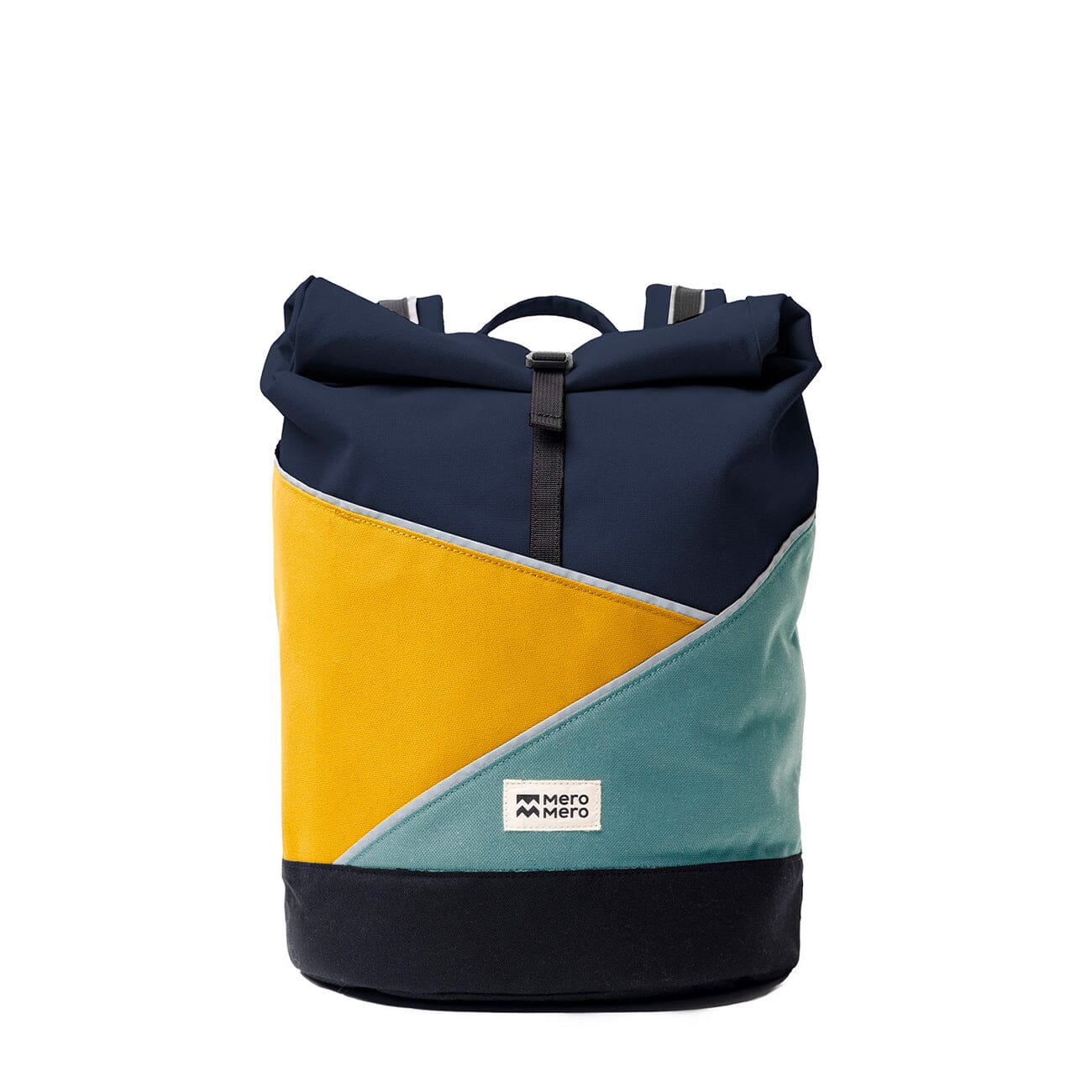









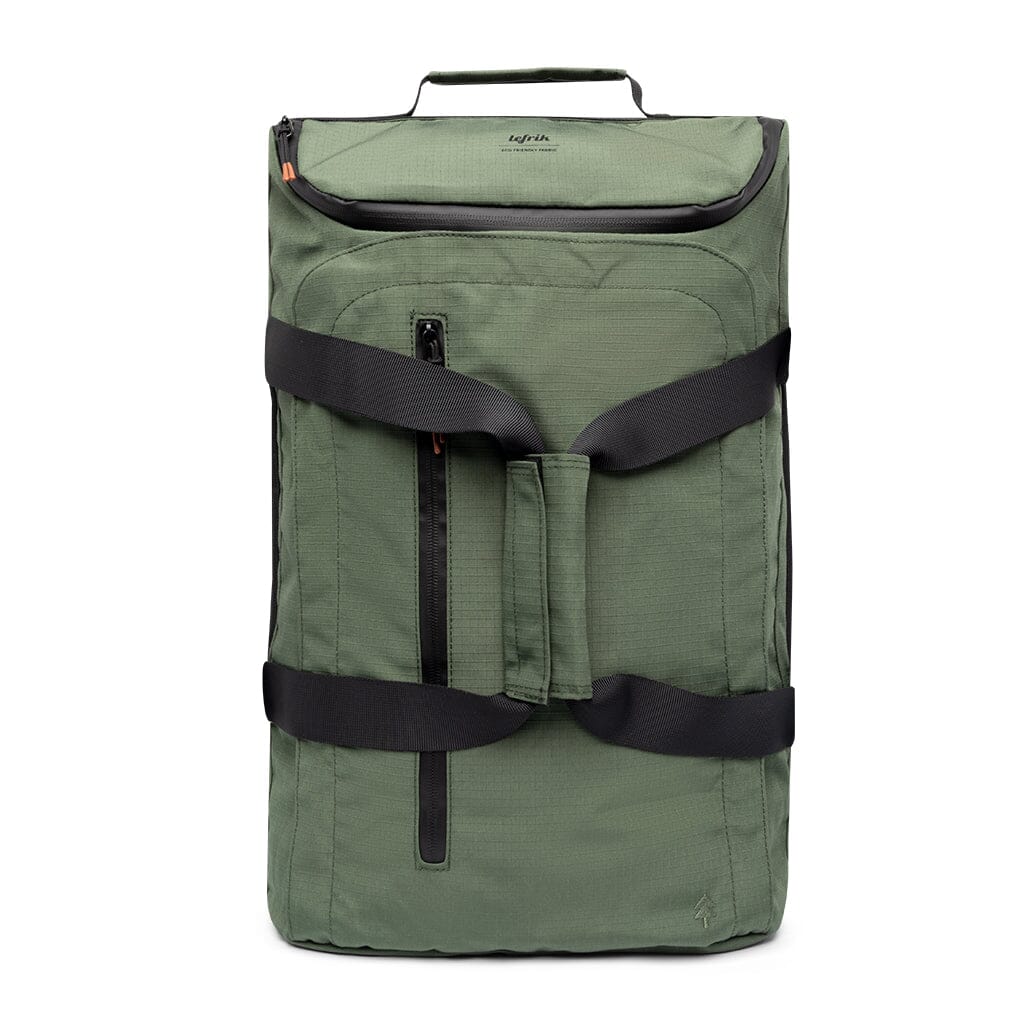

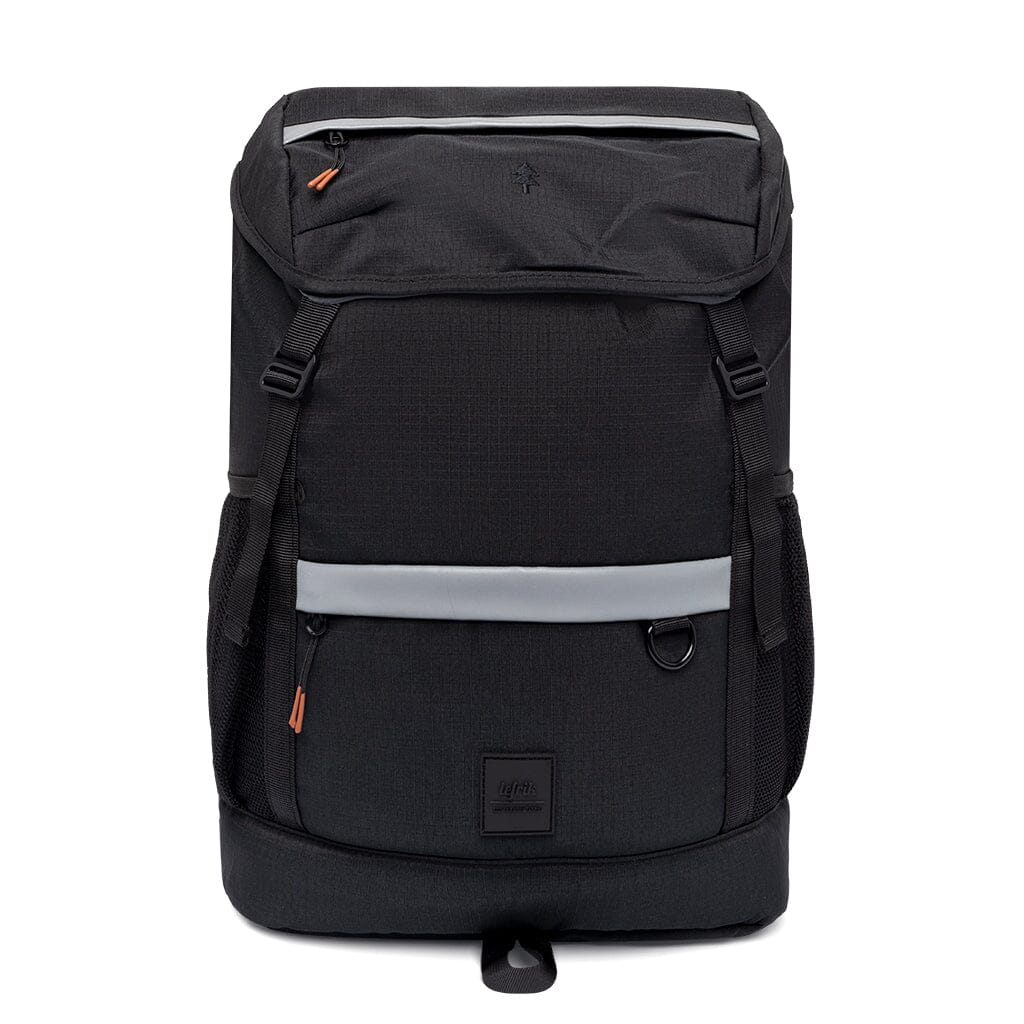
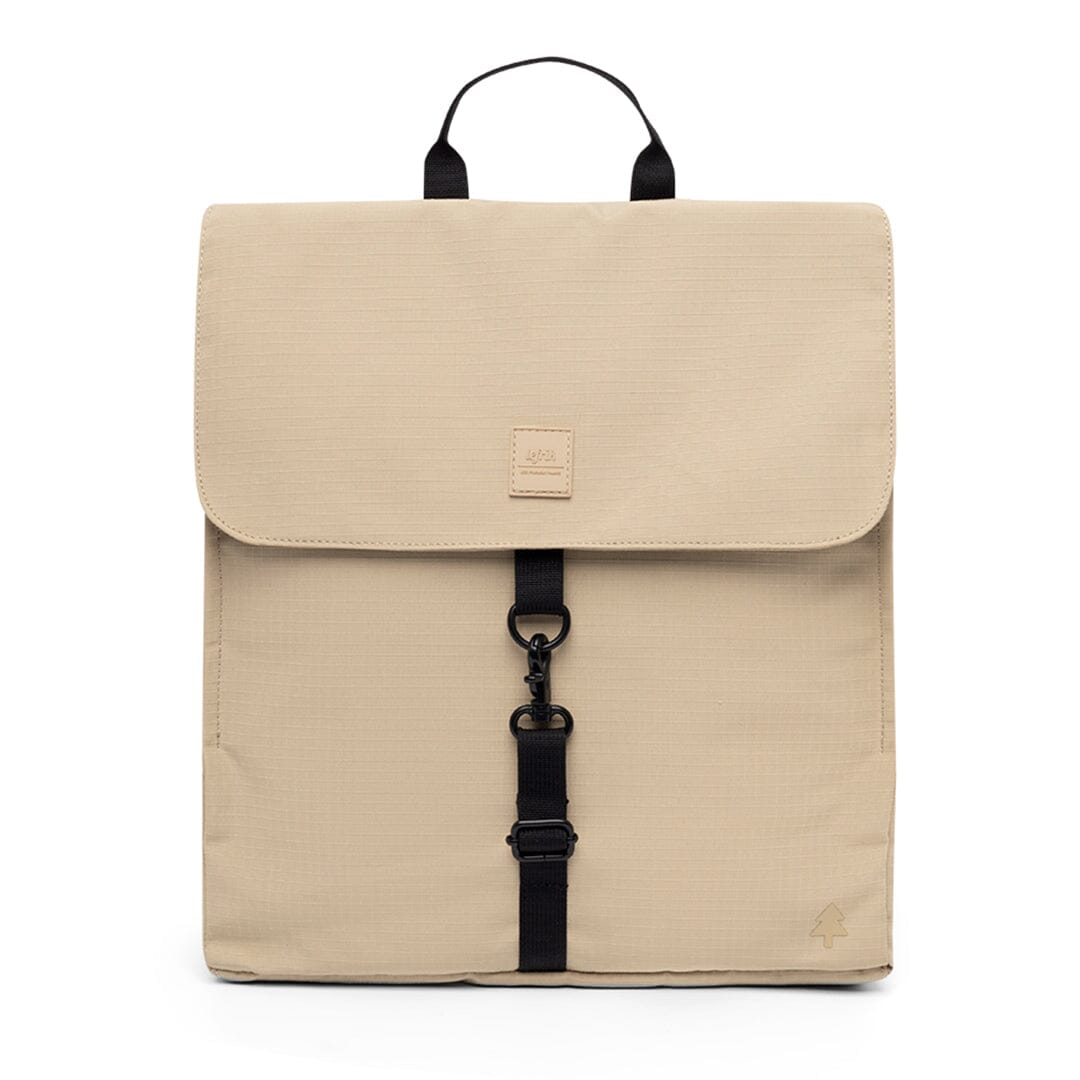

Leave a comment